HARO has been “the” tool for media backlinks for the longest time.
And now since it’s shut down, you’re confused about what to do next?
While HARO did the job, it was highly competitive. I was also sick of the irrelevant queries.
So, I’ve looked for and tried many HARO alternatives over the years. And in this post, I’ll talk about my favorite HARO alternatives for media outreach and link building.
My Top Favorite HARO Alternatives in 2025
1. Qwoted – Connect with Journalists in Real Time
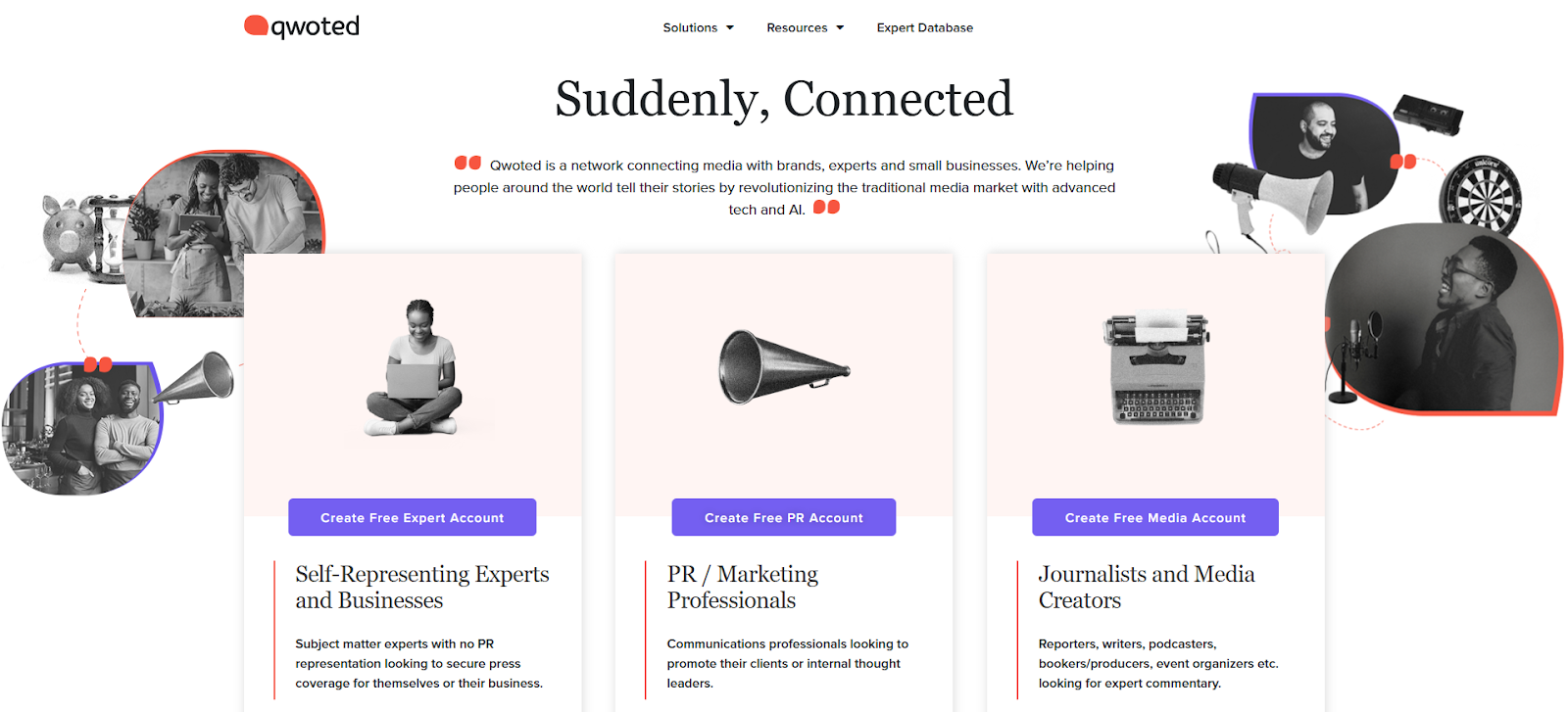
Qwoted is like LinkedIn for PR– reporters post what they need, and if it is within your expertise, you respond to them.
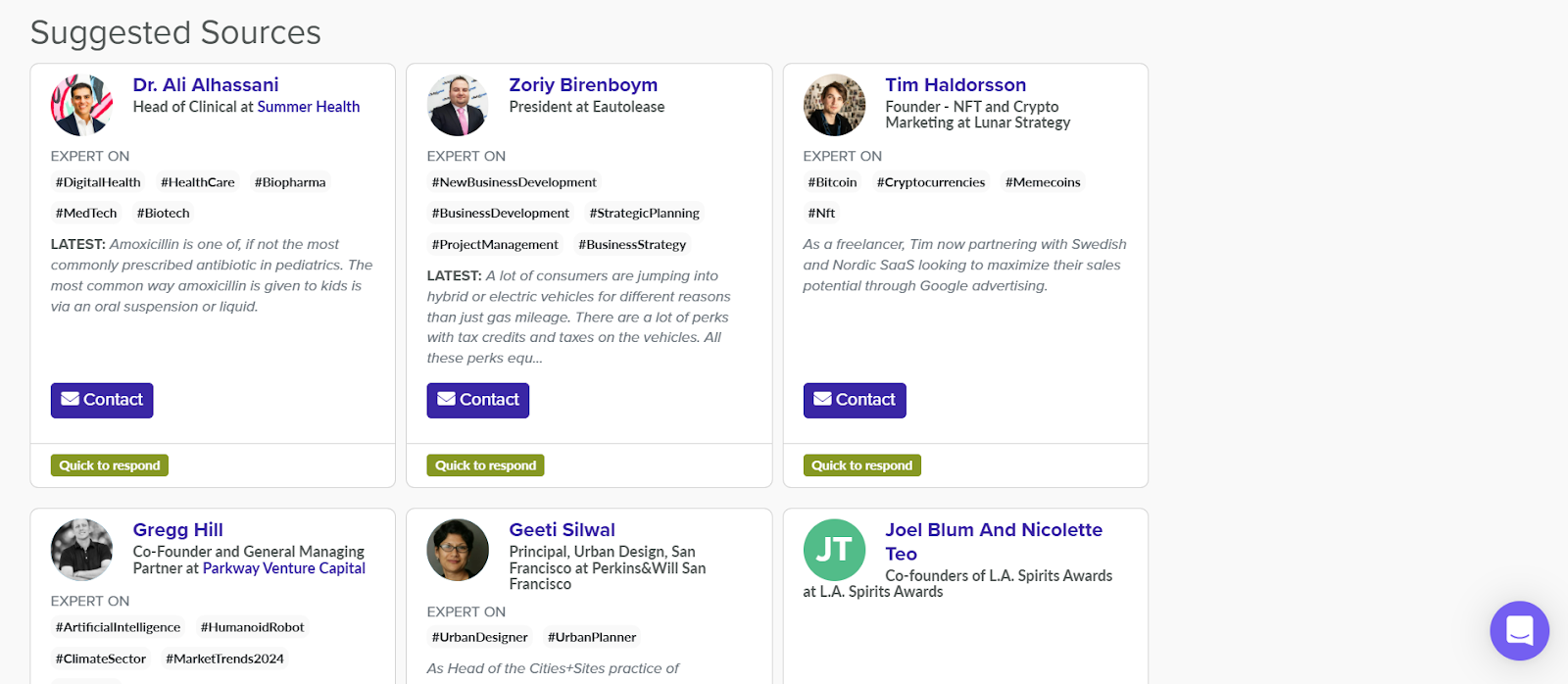
Instead of blasting out emails, Qwoted shows the relevant opportunities on your dashboard. You can even set alerts or check the feed for topics here.
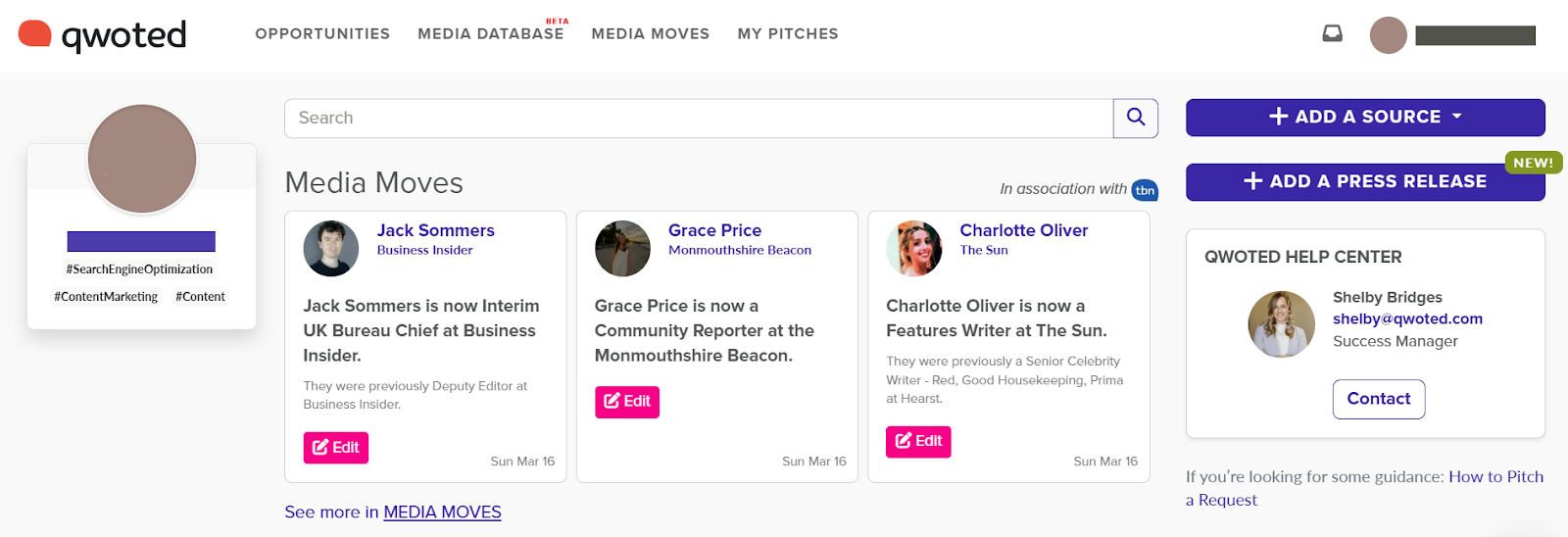
It also notifies you right away when a writer likes your pitch– the whole process is a lot quicker than HARO’s old email system.
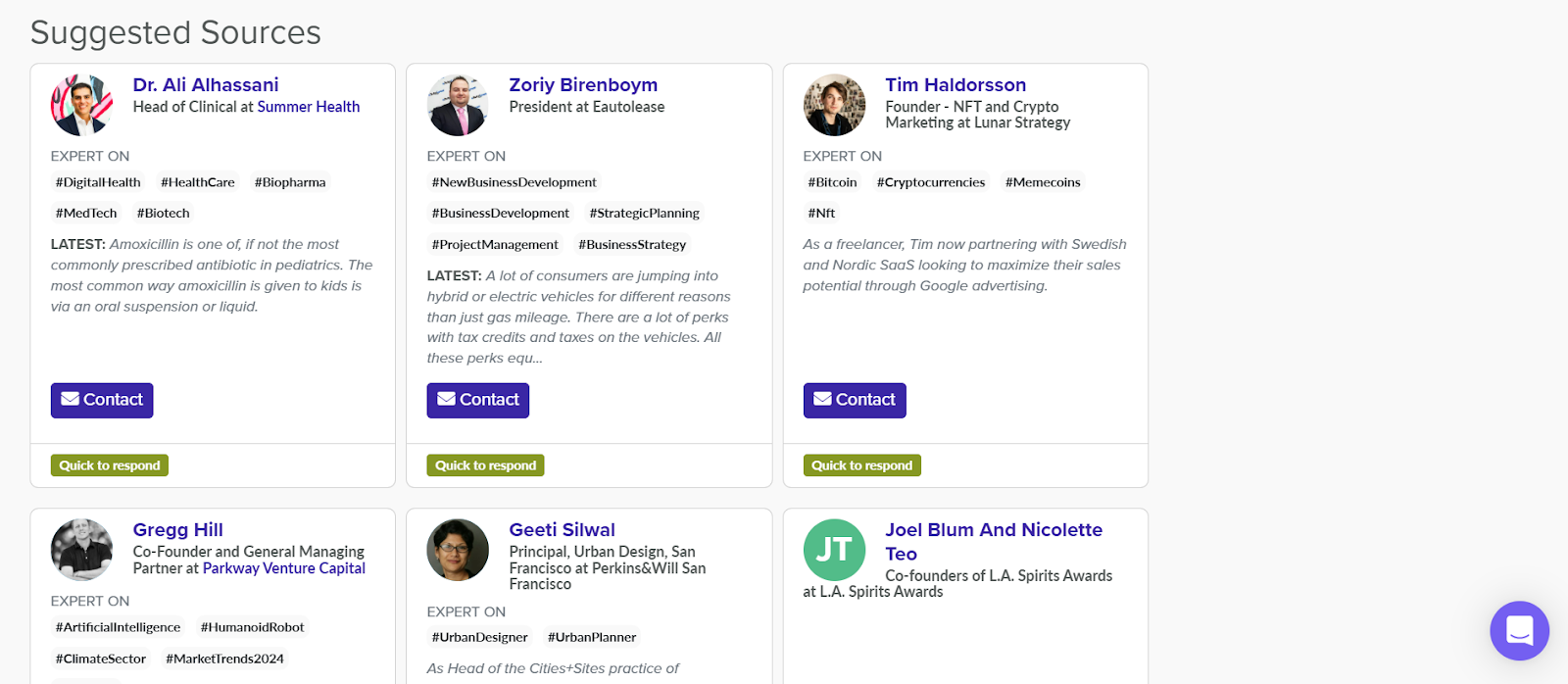
Qwoted offers different account types for self-represented experts, PR/marketing pros, and journalists. As an expert or PR user, you can browse live media opportunities and send pitches with a click.
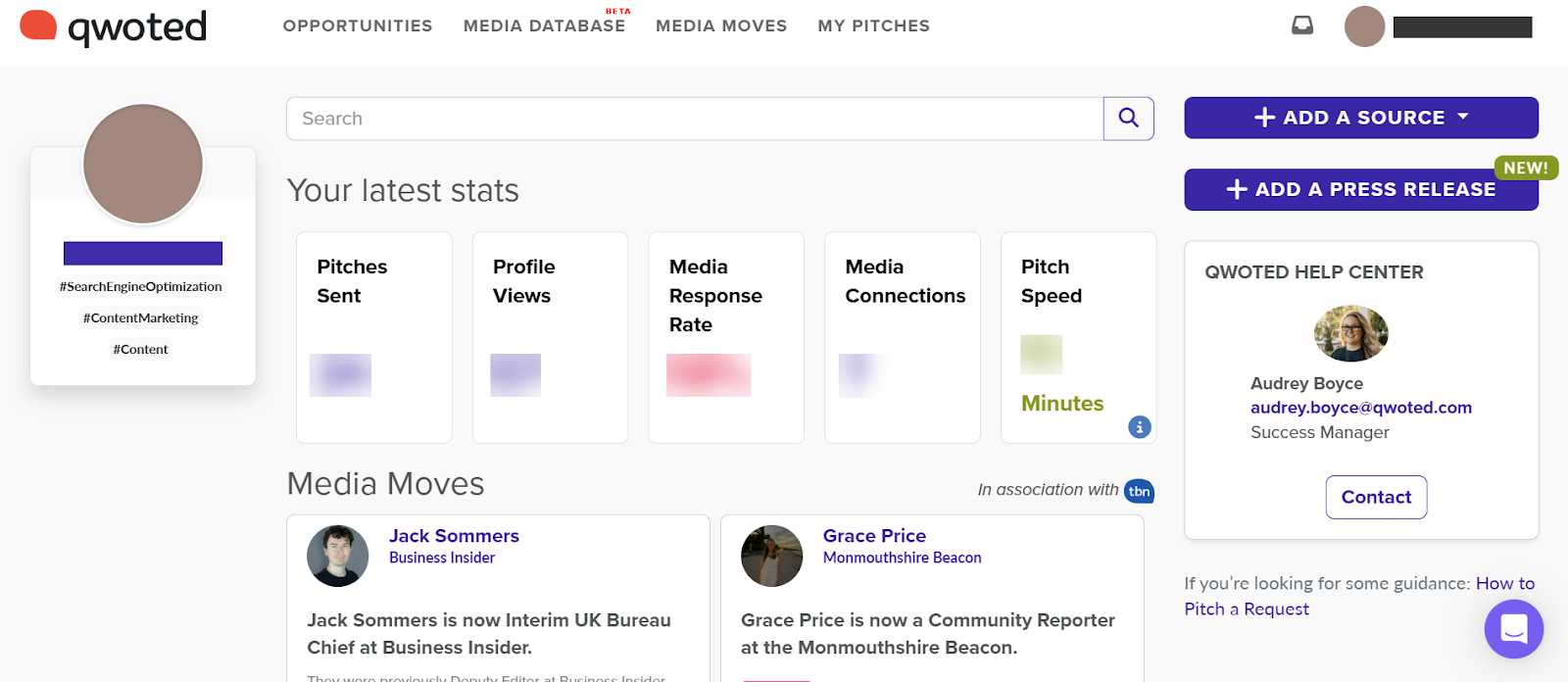
The best part is that you can start using Qwoted for free! You can pitch up to 3 free queries per month– which is not a lot but it’s enough to test the waters. And if you like it, you can subscribe to a paid plan.
Qwoted offers two paid plans– Pro Plan at $99.00 per month and the Teams Plan’s price depends on your needs. For someone who doesn’t do media placement outreach that much, I don’t feel like I get the plan’s worth. But if you do it a lot, you should go for it.
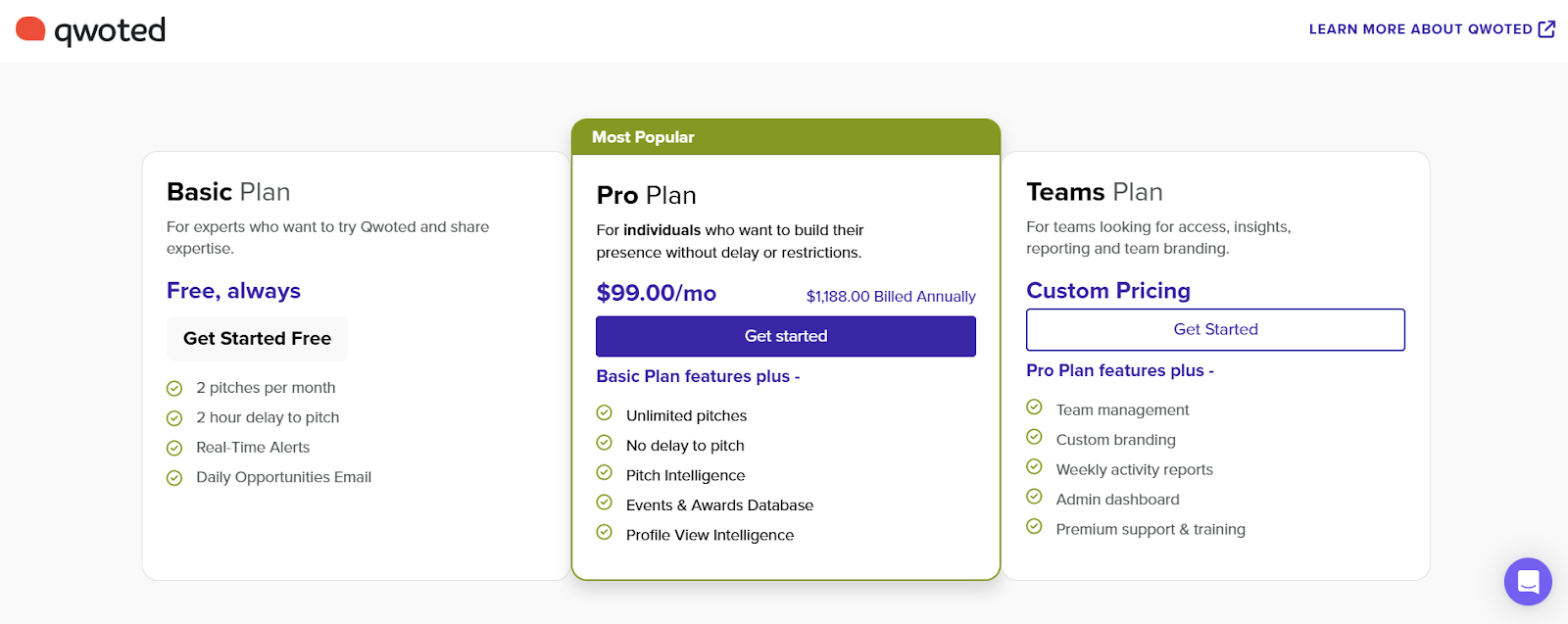
Overall, Qwoted offers a more curated, smart alternative to HARO, that lets you connect directly with.
| Pros | Cons |
|---|---|
| ✔️ Curated platform reducing irrelevant pitches. | ✖️ Free plan limits users to 3 pitches per month. |
| ✔️ Direct pitching within the platform enhances efficiency. | ✖️ Paid plans start at $99/month, which may be costly for occasional users. |
| ✔️ Journalists can acknowledge pitches, providing real-time feedback. | ✖️ Limited free features may not suffice for active PR campaigns. |
| ✔️ Active PR users can be ranked in a “Top 100 PR” leaderboard, offering additional recognition. |
2. SourceBottle – International Query Platform

If you’re looking for a HARO alternative with a global reach (and especially if your target media include Australia or Asia-Pacific), check out SourceBottle.
It’s very similar to HARO in spirit– a free service where journalists and bloggers post “call outs” for sources, and you (an expert) can respond to those requests to get featured.

You can either look for these “call outs” or simply wait for email alerts.
I also really love being able to filter results or receive alerts by specific industries or countries. Say your business only operates in the US and UK – you can apply relevant filters to get call outs from those specific regions only.
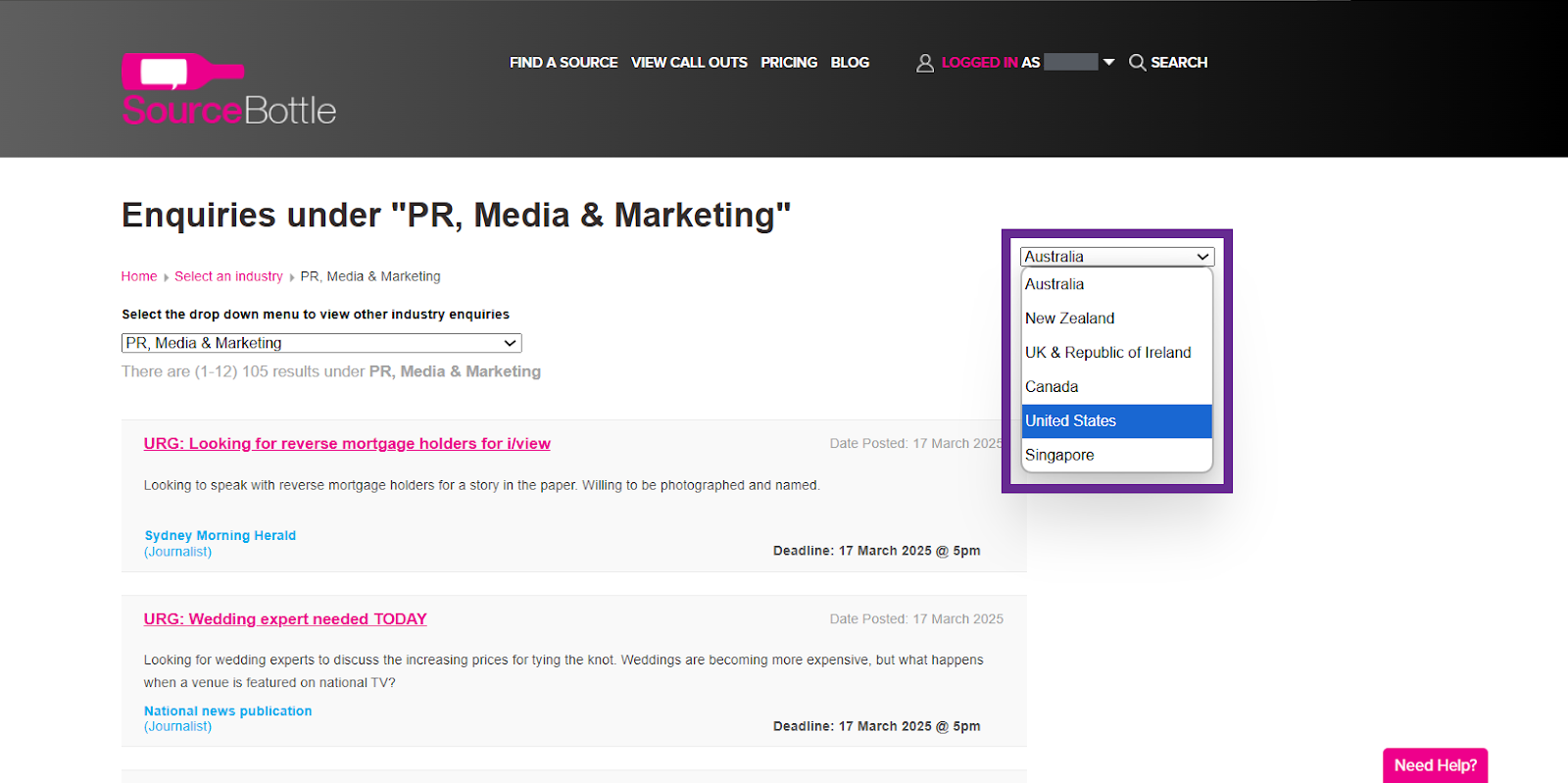
SourceBottle even lets you create a profile in their expert database for a small fee. This helps journalists find you even if you don’t respond to their queries.
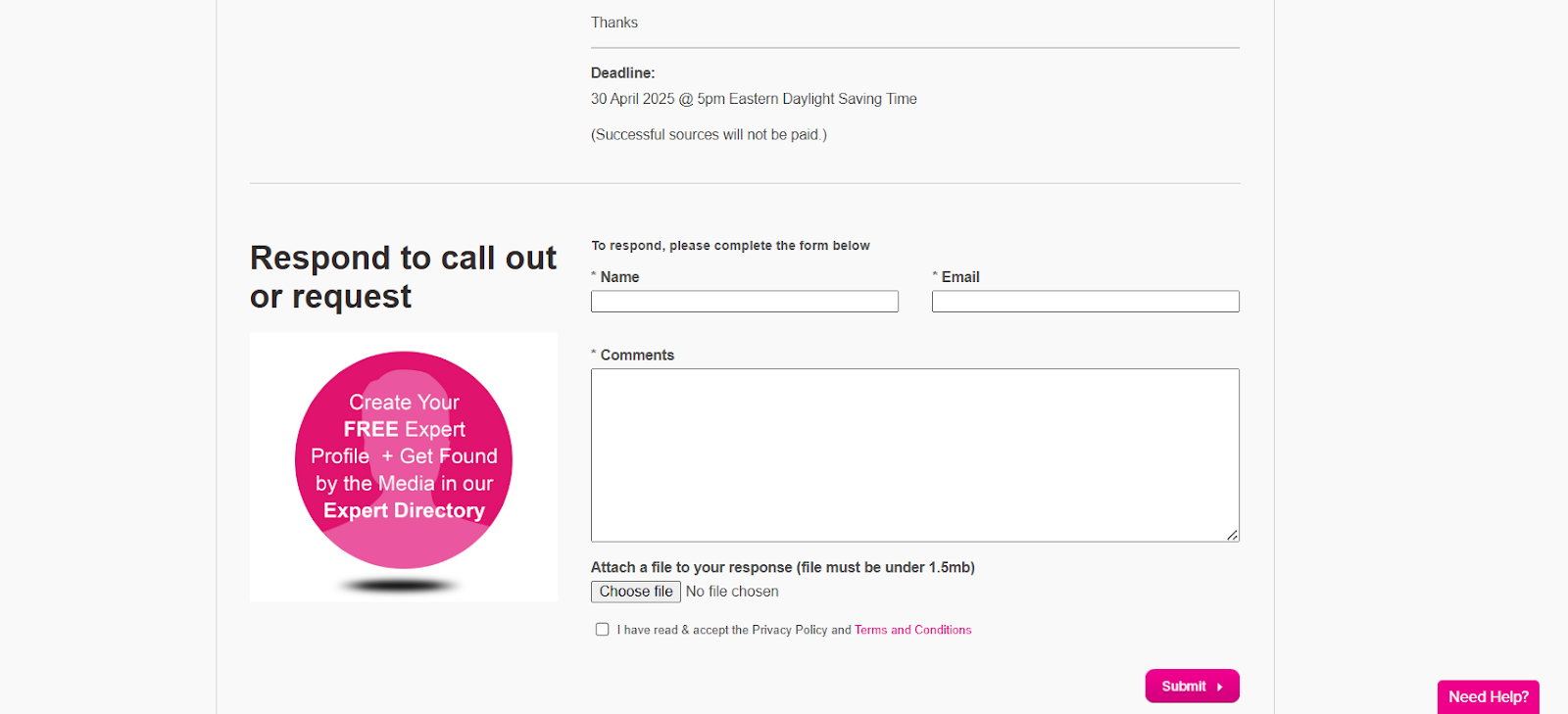
In terms of content, SourceBottle has a broad mix of requests. If you’re open-minded, you can find not just press quotes but also influencer features, product mentions, or guest contributions.
Apart from that, I’ve noticed SourceBottle queries often have a slightly more informal or community feel – perhaps because a lot of bloggers use it, not just traditional news reporters.
You can even post giveaways or product samples if you want bloggers to feature your product. This is perfect if you have an eCommerce business– but you have to pay $25/mo for posting such opportunities.

Otherwise, you can use SourceBottle and respond to queries for free.
But on the flip side, you don’t get a fancy dashboard and smart features like Qwoted. It has a simple interface and a lot of communication happens on emails. But that’s a fair trade-off for considering its low price point and free features.
| Pros | Cons |
|---|---|
| ✔️ Free to use with global reach, especially strong in Australia and Asia-Pacific regions. | ✖️ User interface is simple and primarily email-driven, lacking advanced dashboard features. |
| ✔️ Allows filtering of queries by industry or location, enhancing relevance. | ✖️ Fewer total users than HARO, which may result in less frequent opportunities. |
| ✔️ Options for posting giveaways or product samples, beneficial for eCommerce businesses. | ✖️ Premium features, like posting giveaways, require a $25/month subscription. |
| ✔️ Informal community feel, accommodating bloggers and influencers alongside traditional media. |
3. Featured (formerly Terkel) – Q&A Platform for Expert Content
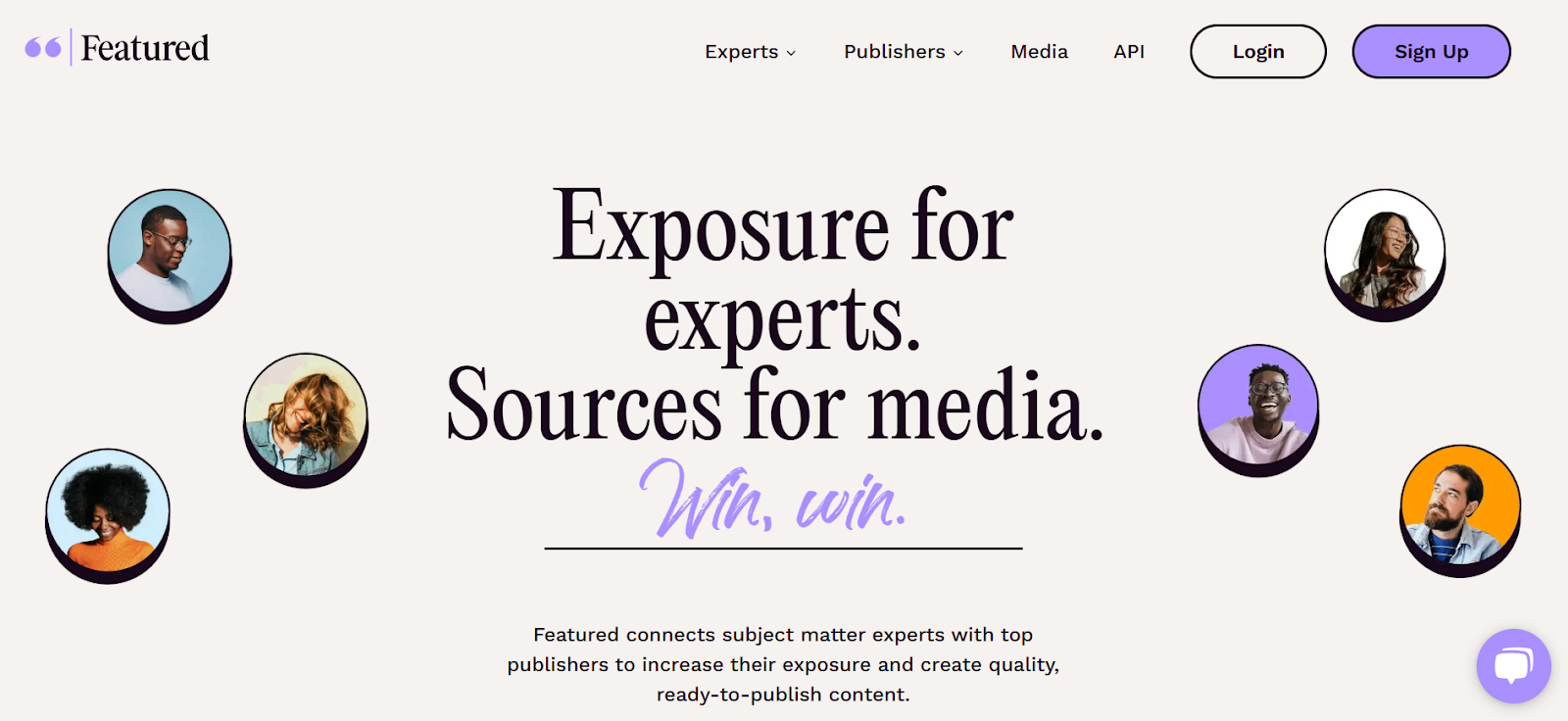
Featured (previously known as Terkel) is a kind of a Q&A platform where publishers ask questions and you (as an industry expert) answer them.
You can see questions related to your expertise right on your dashboard. It also includes basic publisher details like site name, domain authority, etc. I’ve seen many well-known blogs post on it.

You write a response directly on the platform and submit it. If the editor likes your insight, they’ll include it in the final article along with your name, title, company, and usually a link to your website.
The publishers generally compile a few best answers into an article– so your chances of getting a feature are higher.
You can also see the status of your answer– whether it was accepted, when the article goes live, etc.

Plus, you can answer up to 3 questions per month for free and set a few keyword alerts (so you get notified when new questions in your area pop up).
If you want to answer more questions, you need to buy its subscription that starts at just $29/month. It also lets you see the domain authority of the publishers and even let you pitch full article ideas.
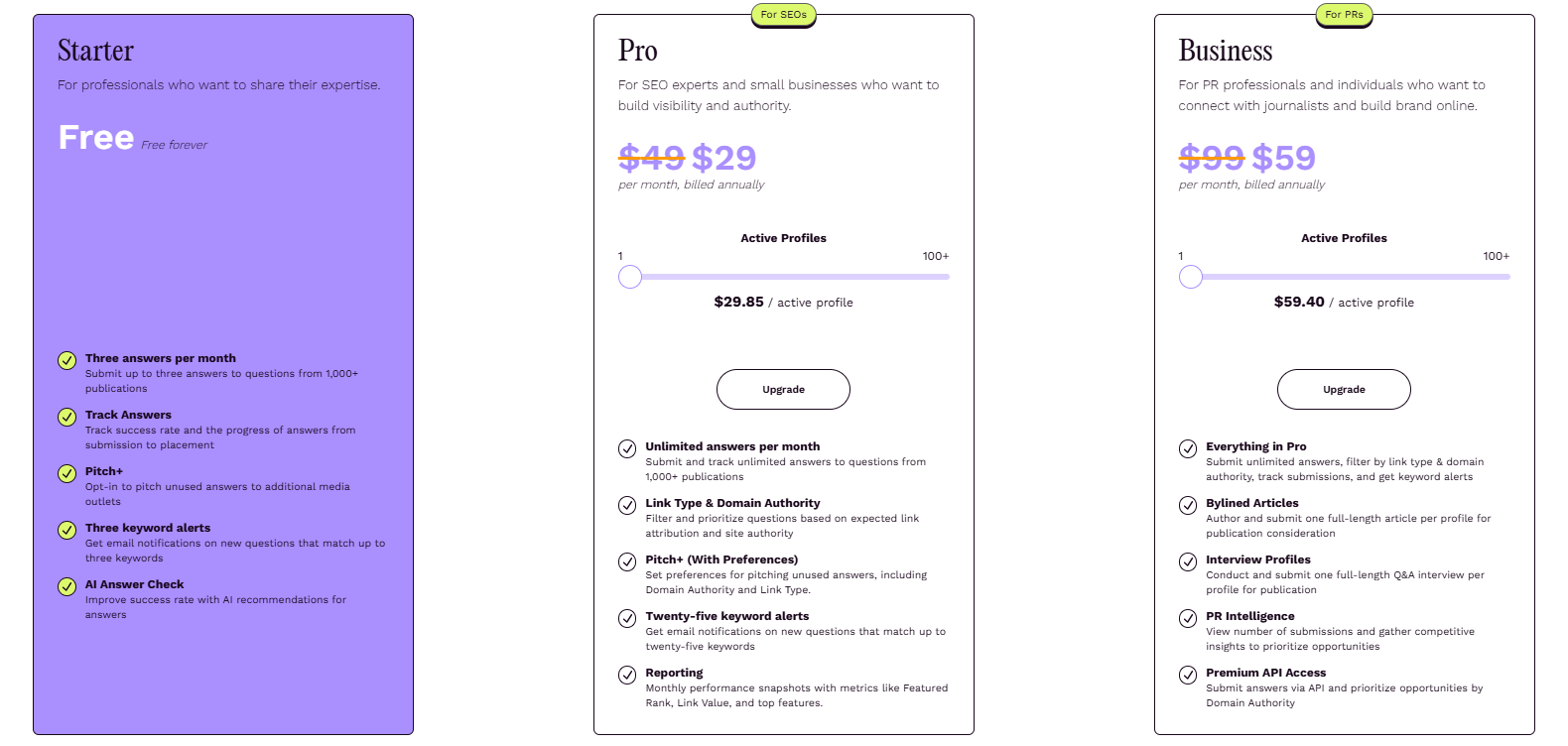
In short, Featured is an excellent HARO alternative that lets you earn quality backlinks by answering industry questions.
| Pros | Cons |
|---|---|
| ✔️ Allows experts to submit written answers to publisher-posted questions, facilitating content-driven exposure. | ✖️ Free plan limits users to 3 answers per month. |
| ✔️ High conversion rate of pitches to placements due to targeted questions. | ✖️ Paid plans start at $29/month for increased submissions and additional features. |
| ✔️ Provides status updates on submitted answers, enhancing transparency. | |
| ✔️ Opportunities for backlinks and mentions across various blogs and online magazines. |
4. JustReachOut – DIY PR Outreach Platform
JustReachOut is like a mini CRM-meets-search-engine for PR, which works perfectly for media placement outreach.
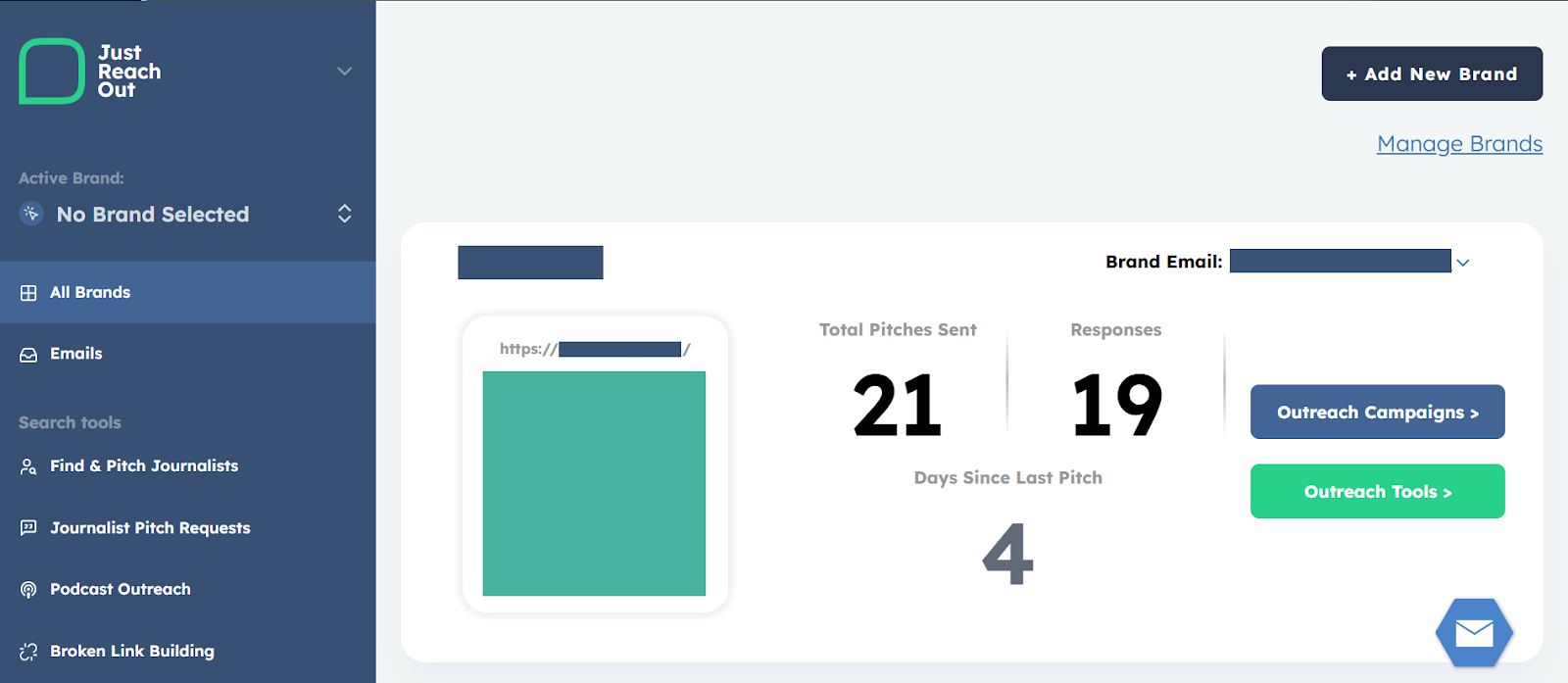
It is a full PR suite with tools like: a journalist search engine, a curated list of relevant journalist requests (sort of like an internal HARO aggregator), podcast finder, and even a broken link building tool.

You can search for journalists by topic or keyword. For example, if you run a fintech startup, you might search “finance technology” or “fintech funding” and it will show journalists who have written about those topics, along with their contact info or X handles.
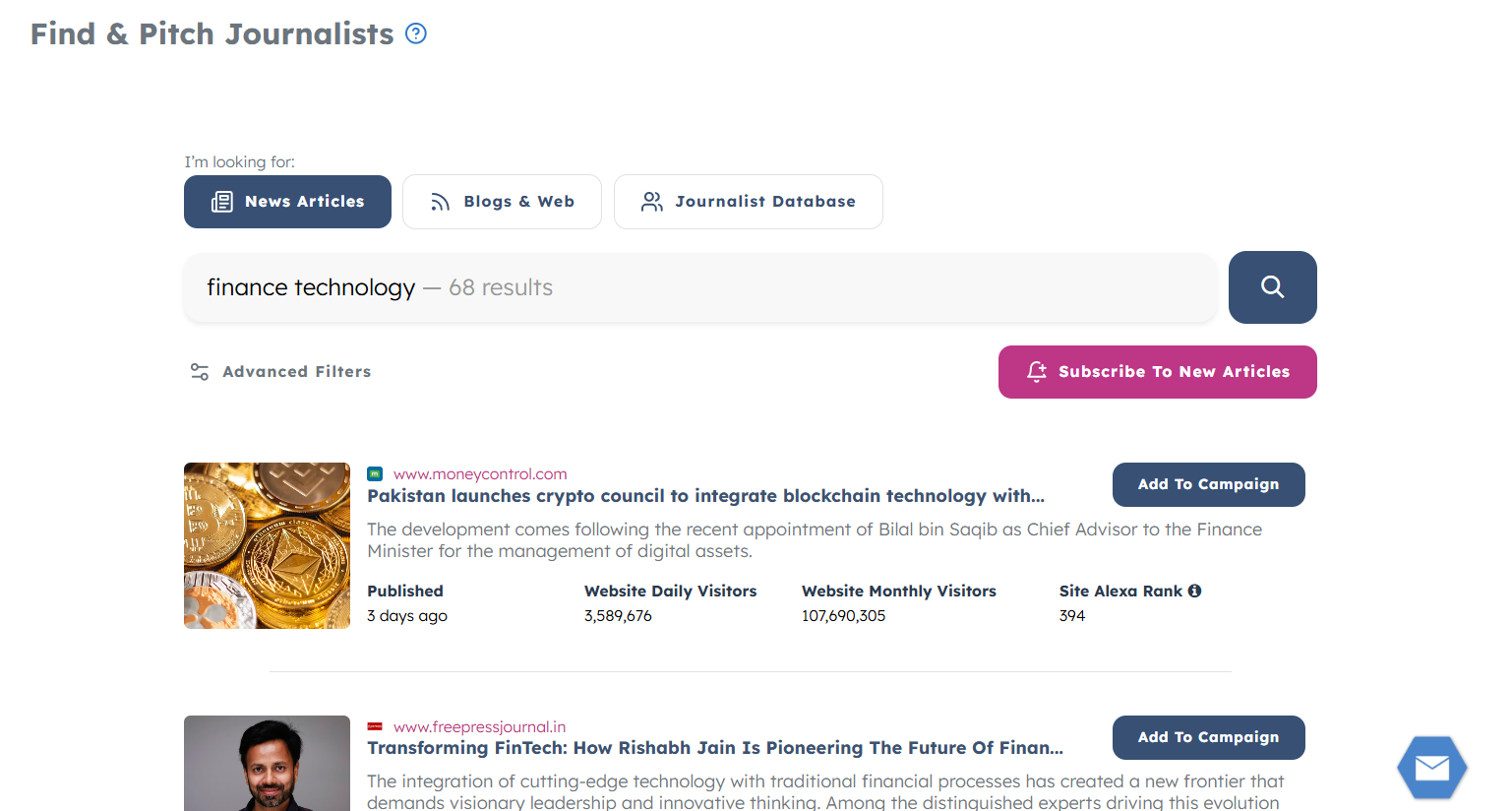
It even pulls journalist requests from platforms like X and gives them to you in one place. If you’re into podcasts, you can even find opportunities to pitch yourself as a guest.
Unlike HARO, JustReachOut lets you be proactive. It helps you find journalists who already write about your topic and lets you pitch them a story idea or your expertise. So, you’re not limited by what queries are available.
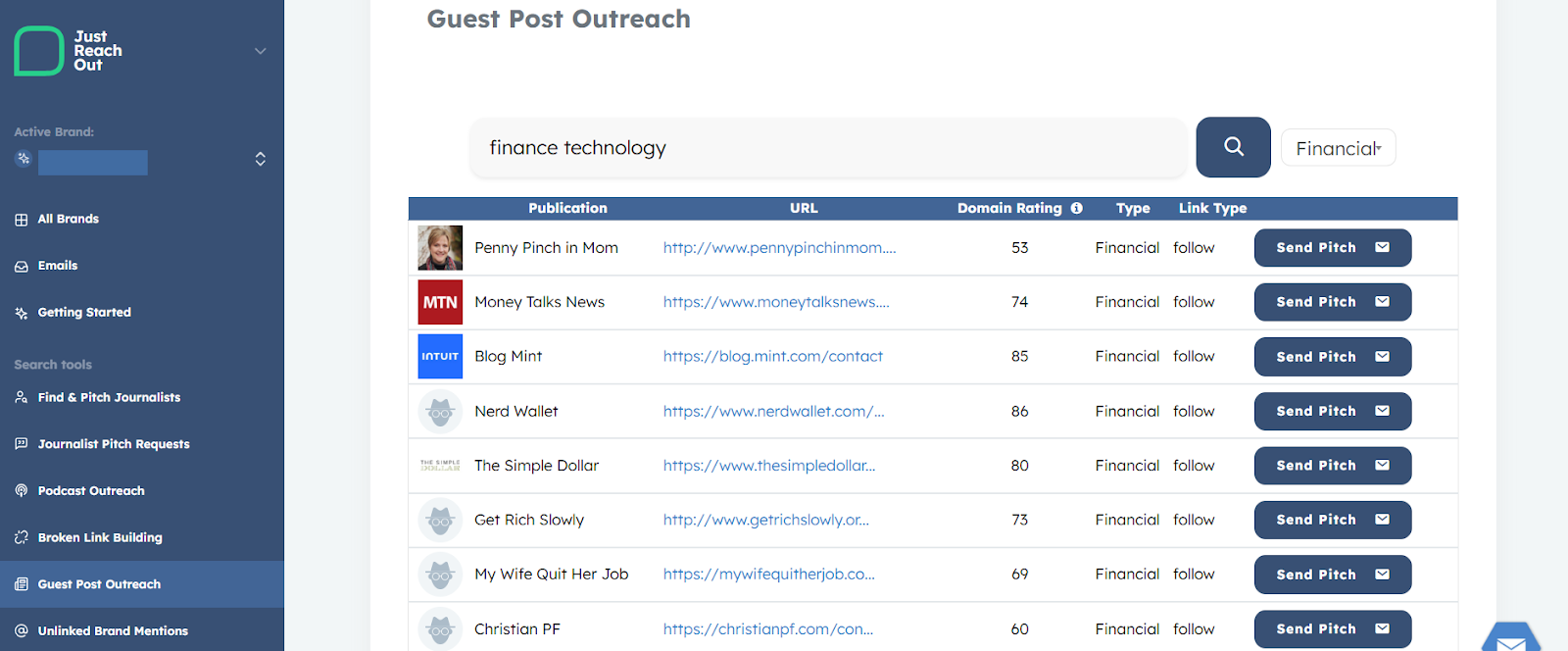
Beyond PR, JustReachOut helps you find broken links in articles in your niche so you can reach out to such publishers and pitch your content.
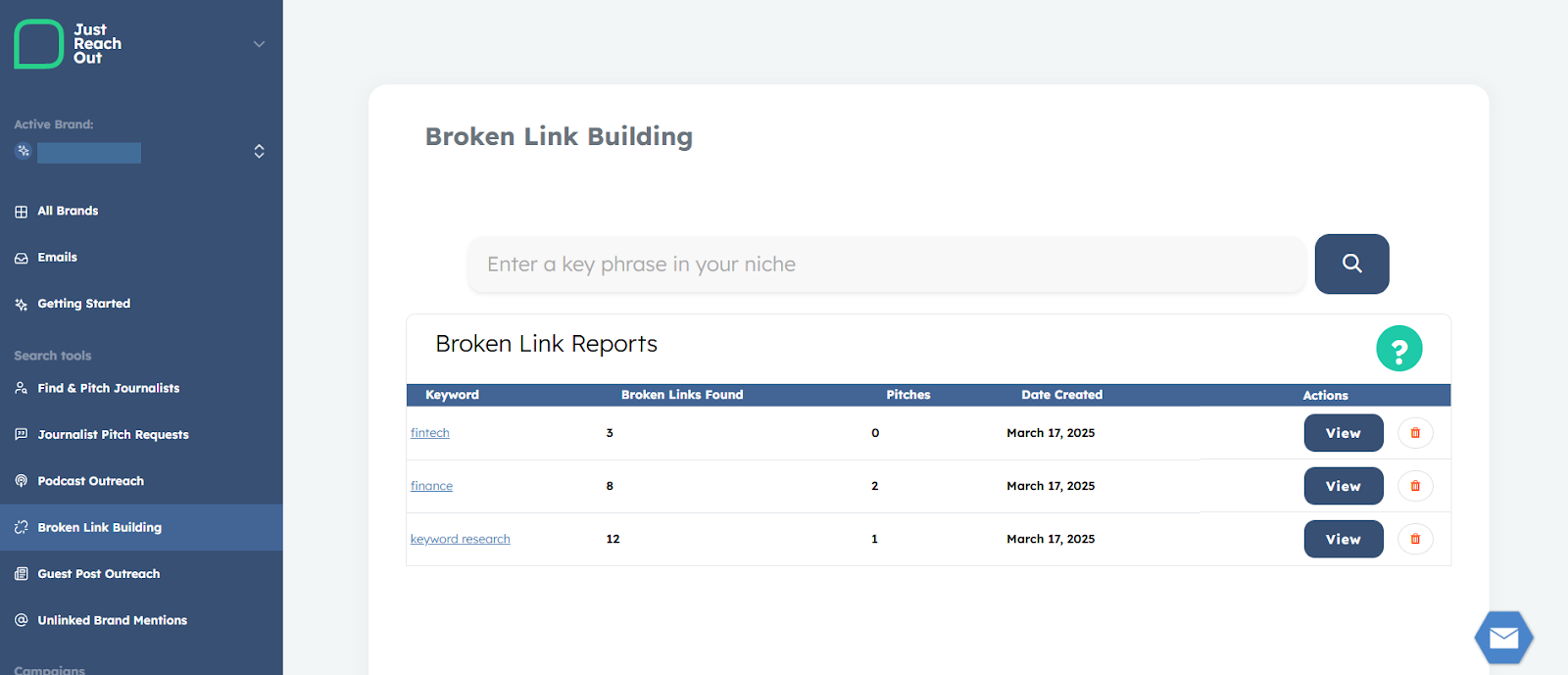
But JustReachOut is a premium tool– starting at $147 per month and going upto $1,997 a month.
Well, that’s pricey– specially if you’re a small business. But if PR is mission-critical for you and you have the budget for it, JRO is totally worth it. And the best part is that it has a 7-day free trial– so you can test the waters first.
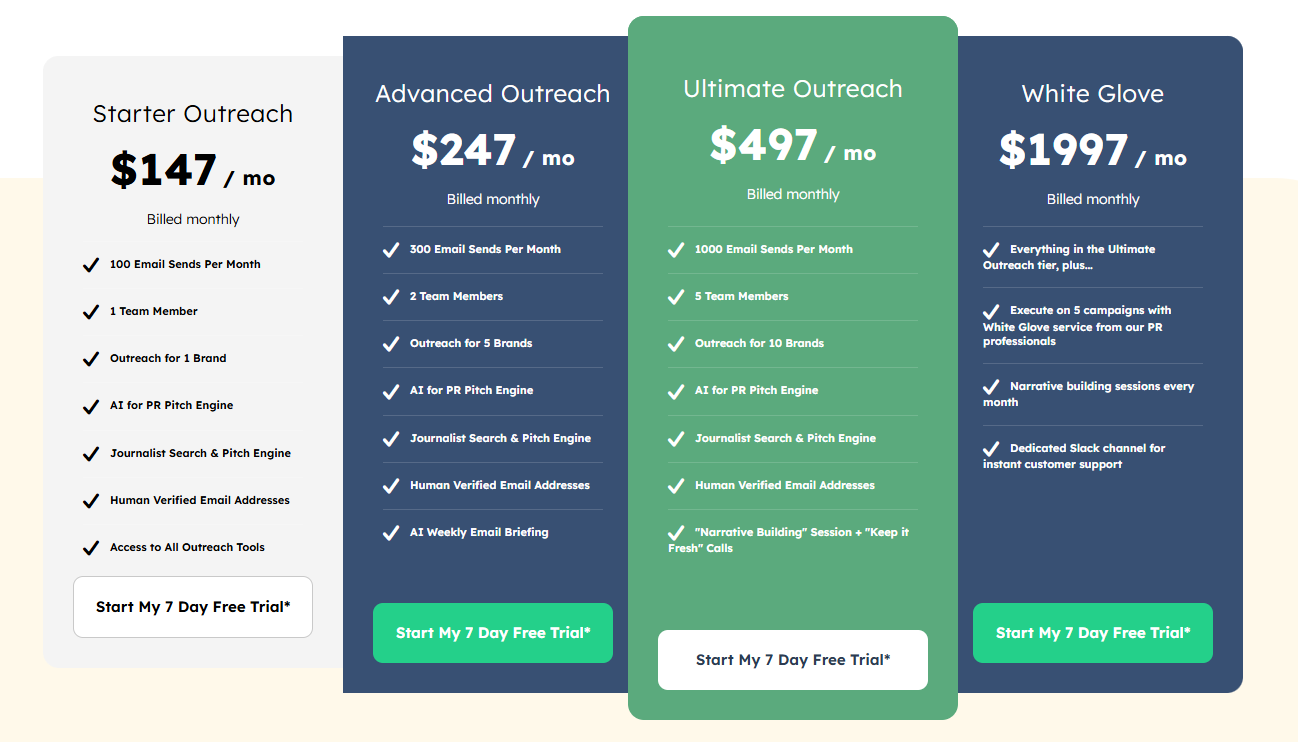
Basically, if you want a tool that not just helps you find media placement but helps you manage your overall PR, JustReachOut is perfect.
| Pros | Cons |
|---|---|
| ✔️ Comprehensive PR outreach software combining journalist search, pitch management, and SEO tools. | ✖️ Premium pricing starts at $147/month, which may be steep for small businesses or individuals. |
| ✔️ Allows proactive pitching to journalists, not limited to existing queries. | ✖️ Some users may experience a learning curve to fully utilize all features. |
| ✔️ Includes tools for podcast outreach and broken link building, expanding PR opportunities. | ✖️ Focuses primarily on outreach rather than broader PR management. |
| ✔️ Offers a 7-day free trial to explore features before committing. |
5. Help a B2B Writer – Niche Platform for Content Marketing Collaboration
Being a content marketer, I just love Help a B2B Writer. As the name suggests, it connects B2B content writers with experts.

Essentially, it’s like HARO but specifically for content marketing. It’s perfect if your goal is to get backlinks and mentions from industry blogs or B2B sites.
The process is very simple. If you’re a source (expert), you sign up for free and select the areas of expertise you can speak on – for example, SaaS marketing, UX design, cybersecurity, etc.
Then, when a writer submits a request needing a source on one of those topics, you’ll get an email with the request.
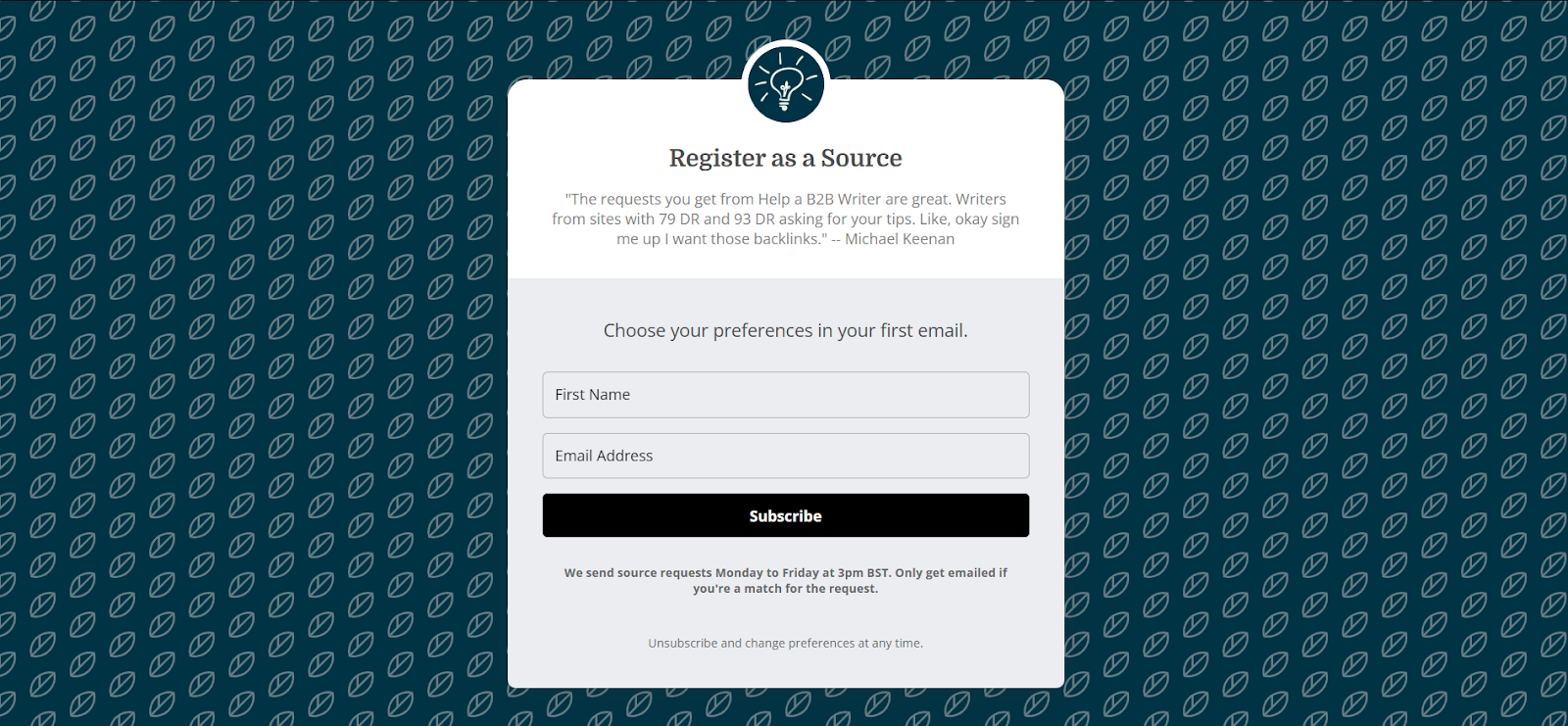
Unlike HARO’s blasts, you only get matched requests. So, if you’re an SEO expert, you won’t see a finance or healthcare question. This means no spam and no competition overload.
You might only get about 2–3 requests a week that matches your expertise, but you’ll have a much higher chance of getting published in the resulting articles.
On Help a B2B Writer, you can also look at active requests to find opportunities relevant to your expertise. The topics typically revolve around marketing, sales, business operations, tech, etc.

And the outlets range from well-known marketing blogs to SaaS company blogs, to sometimes bigger industry sites.
The best part is that Help a B2B Writer is completely free for both experts and writers. It’s a community service of sorts. But on the downside, if you want to use its API, it can be really pricey. The subscription is a whopping $500.

Overall, the targeted nature and community vibe make Help a B2B Writer one of my favorite HARO alternatives.
| Pros | Cons |
|---|---|
| ✔️ Tailored specifically for B2B content, connecting writers with expert sources. | ✖️ Limited to B2B-focused media opportunities, which may not suit all industries. |
| ✔️ Matches requests to experts’ specified areas of expertise, reducing irrelevant pitches. | ✖️ Smaller user base compared to broader platforms, potentially limiting opportunities. |
| ✔️ Completely free for sources and writers, making it accessible for budget-conscious users. | ✖️ Highly competitive environment due to targeted nature. |
| ✔️ Streamlines the process of gaining exposure through well-matched opportunities. |
Bonus: Use X for Journalist Requests
Aside from dedicated platforms and tools, one often overlooked (but powerful) HARO alternative is X. Many journalists hop on Twitter to quickly find sources, using hashtags like #JournoRequest, #PRrequest, or simply tweeting “Looking for someone who can comment on…”.
It’s landed me some quick wins that HARO never could.
How X Can Help Find Media Placements and Backlinks:
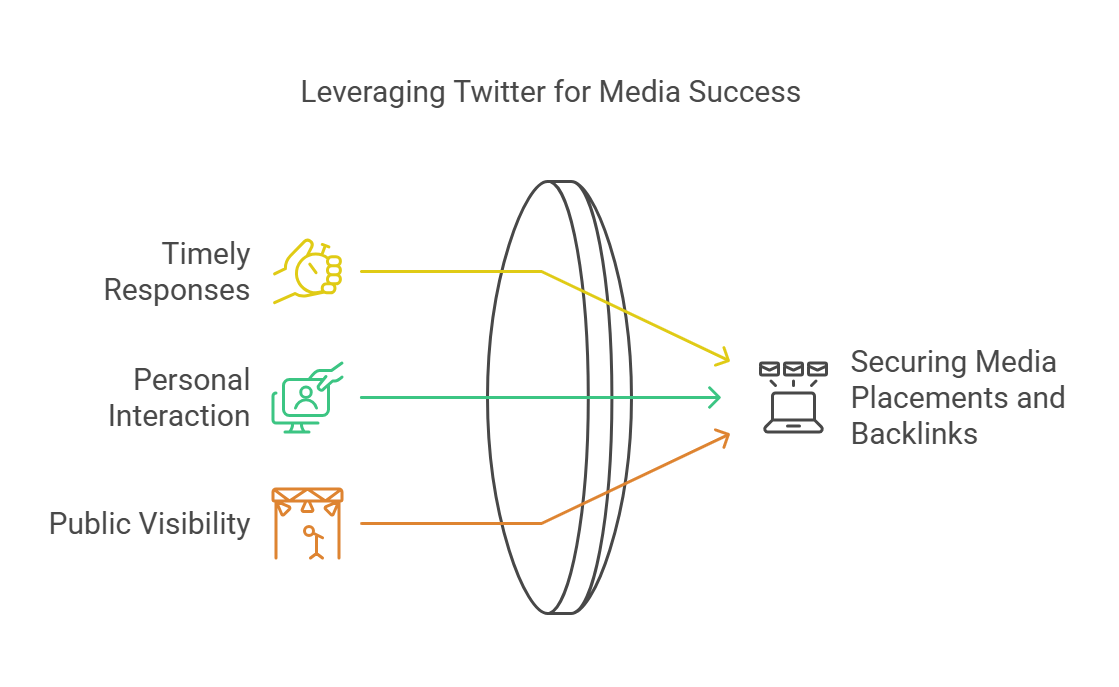
↳ Journalists often turn to X when they need a source within hours, not days. So these opportunities can be very fresh and less competitive (since not everyone monitors X closely). I’ve responded to such requests and got the gig simply because I was first and on-point.
↳ Also, you can have more personal interaction on X and connect better. If a journalist posts a request, you can reply with a short teaser of your expertise and maybe ask if they’d like you to DM them more info.
↳ Plus, commenting on such tweets also shows others that you’re active (I’ve had other journalists notice me responding to peers, which put me on their radar).
How to Use X for Media Opportunities:
There are a few ways to do this:
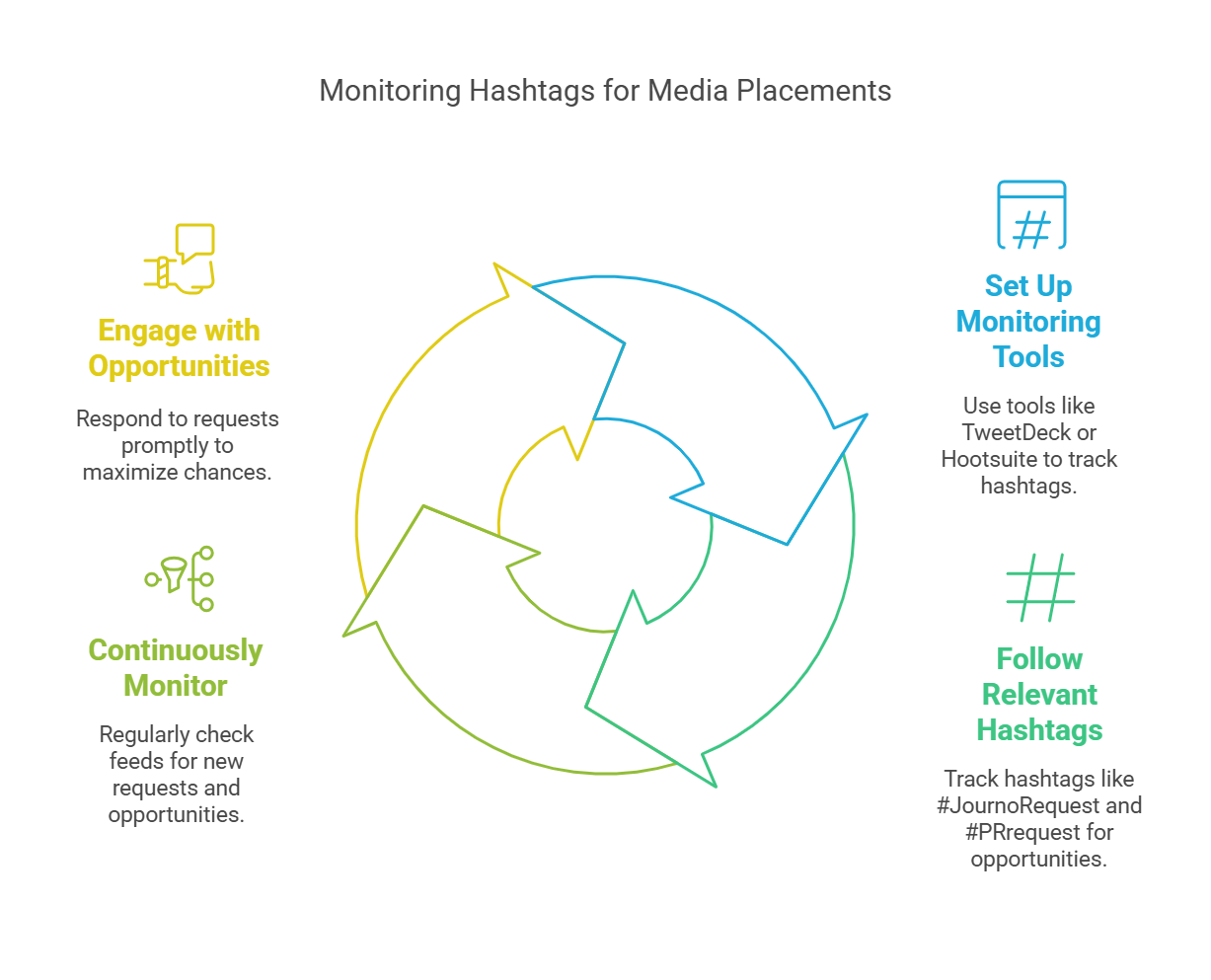
↳ Follow Hashtags: The hashtag #JournoRequest is heavily used, especially by UK journalists, but also globally. Search this hashtag, and you’ll see a feed of live requests. #PRrequest can also help you find opportunities in the same way. I’ve used tools like TweetDeck or Hootsuite to set up a column to continuously monitor these hashtags, so I don’t miss anything.
↳ Follow Journalists and Lists: Many journalists will simply tweet their need without a hashtag. If you’re active on X (formerly known as Twitter), it pays to follow journalists in your industry. Plus, I’ve seen, some PR community accounts retweet #JournoRequest tweets to increase visibility. You can also find and follow such accounts that aggregate or retweet journalist requests relevant to your niche.
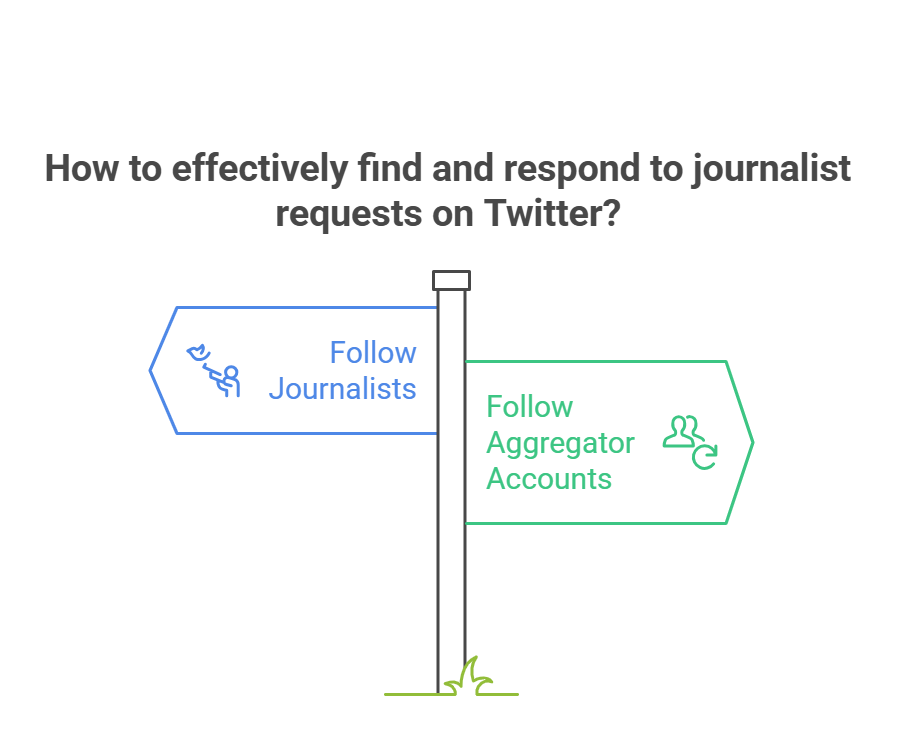
↳ Use Advanced Search: Search for your industry keywords along with words like “looking for” or “seeking” and filter by journalist accounts. Sometimes, I’d do a quick search like “looking for” + keyword” and find relevant media placement opportunities.
↳ Tweak Your X Profile: Make sure your Twitter profile reflects your expertise. Journalists will check you out. Have a clear bio that states your position and company, and maybe a link to your LinkedIn or site.
↳ Be Quick: When you respond to requests, be fast. Most of these are first-come, first-serve. If you see a relevant opportunity, hop onto it, or it could be gone in minutes.
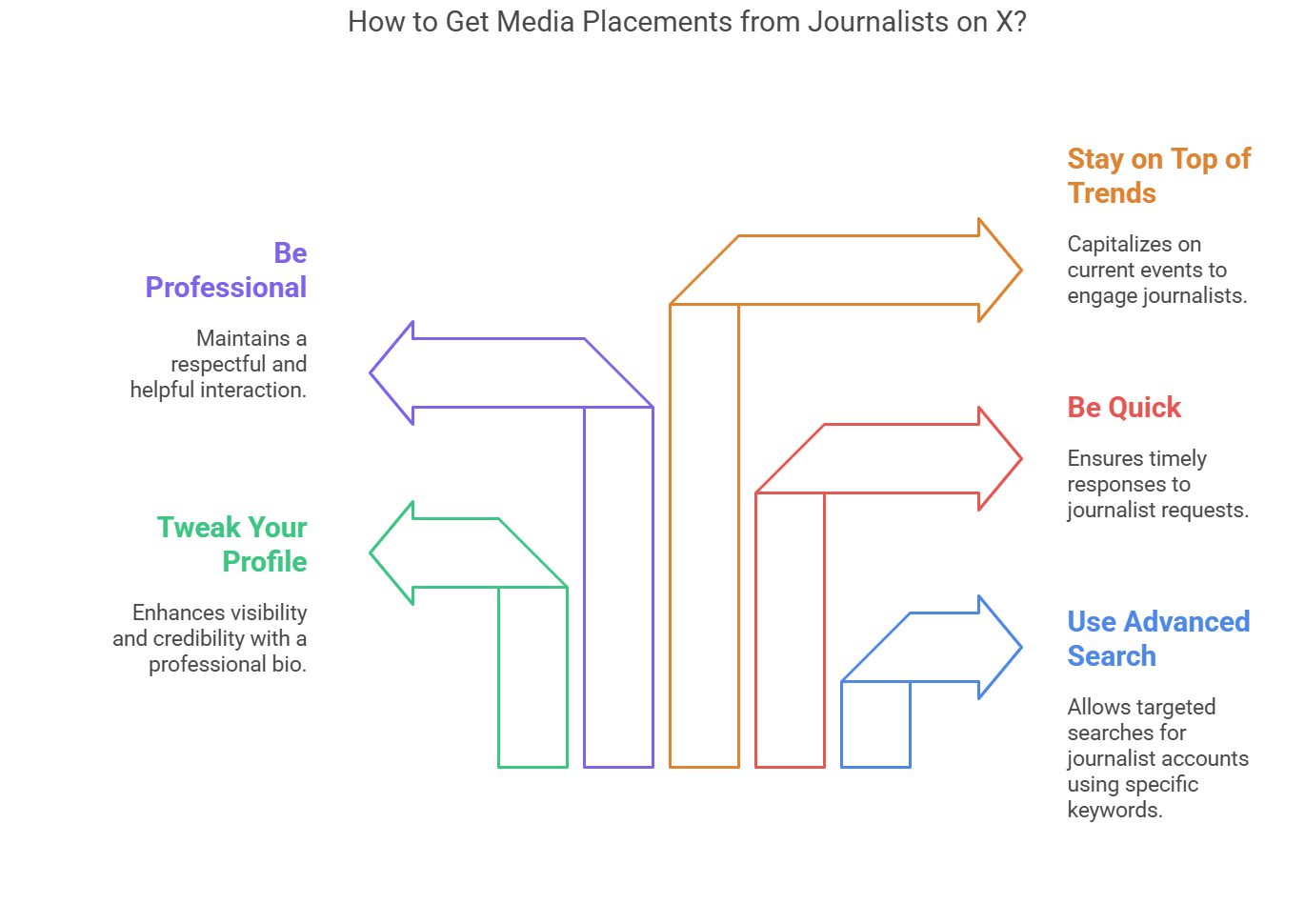
↳ Be Professional: Just remember to keep it professional and actually helpful – no one likes seeing spammy replies. A quick reply like, “Hi [Name], I’m a [Your Title] who has done XYZ – have some insights on this topic. Happy to help, I’ll send you a DM with details!” will do the trick.
↳ Try Being on Top of Trends: Be on the lookout for trending news. Sometimes journalists will tweet calls related to recent news, which can be as fresh as minutes ago. If you can tie yourself to a news event quickly, you might capitalize on a trending hashtag plus a media backlink.
Basically, X is a real-time place for sources and journalists. I recommend making it a part of your media outreach strategy. It’s free, it’s fast, and in 2025, many journalists practically live on X.
Choosing the Right Mix of HARO Alternatives
Honestly, if you are serious about building links with media placements, there is no one particular tool that can help you do it all. I recommend using these tools in combination with X to find link-building opportunities that actually convert into backlinks.
Check out these guides to learn more about building links:
↳ How to get high authority government backlinks?
↳ International link building strategies
↳ Ecommerce link building strategies
↳ How to automate link building?
Frequently Asked Questions
After HARO shut down, it briefly rebranded as Connectively, which also shut down in 2024. Now, there are several alternatives like Qwoted, SourceBottle, Featured (formerly Terkel), JustReachOut, and Help a B2B Writer. These platforms provide similar services, connecting journalists and experts for media outreach, expert quotes, and backlinks.
Yes, SourceBottle is free for general use. Experts and businesses can sign up to receive email alerts of media opportunities or browse call-outs by location or industry. However, additional paid options like instant alerts or premium expert profiles are also available for a small monthly fee.
Yes, Twitter (X) is excellent for media outreach. Journalists frequently post urgent requests with hashtags like #JournoRequest or #PRrequest. By actively following relevant journalists, hashtags, and setting alerts, you can quickly respond and secure media placements, especially in real-time situations or breaking news scenarios.
To write effective pitches, keep it concise, tailored to the journalist’s query, and demonstrate clear, relevant expertise. Clearly explain why you’re the best source for their article, keep your tone professional yet conversational, respond promptly, and always personalize pitches to align directly with the journalist’s specific needs.
Qwoted is a modern, curated platform connecting experts directly with journalists via a clean, user-friendly dashboard, whereas HARO used mass email blasts that often resulted in clutter. Qwoted offers built-in response tracking, reduced competition, better vetting of experts, and more personalized communication, making media outreach quicker and more effective.
Help a B2B Writer is a free platform connecting B2B content creators and experts. Writers post specific requests for expert insights on business, technology, and marketing topics. Experts receive targeted queries directly via email based on their expertise, significantly reducing irrelevant pitches and enhancing backlink quality.
Qwoted is a popular platform specifically designed to connect journalists and PR professionals. PR experts create detailed profiles, journalists post queries, and experts pitch directly on-platform. It offers targeted matching, streamlined communication, and features like leaderboards to encourage quality participation and ongoing media relationship-building.
JustReachOut is one of the best PR software platforms. It is great for proactive media outreach, combining journalist discovery, pitch management, podcast outreach, and SEO-focused link-building features.
Featured (formerly Terkel) is a Q&A-driven platform where publishers post questions on specific topics, and industry experts submit insightful responses directly. Selected expert answers are featured in roundup-style articles published on reputable websites and blogs, providing valuable backlinks, brand exposure, and authoritative positioning for contributing experts.
JustReachOut pricing starts at approximately $147 per month after a 7-day free trial. The cost can vary based on your chosen plan, the number of outreach campaigns, and included features. It’s suitable for businesses serious about regular, proactive PR outreach, offering comprehensive tools for media placement and link-building strategies.
ProfNet is a premium subscription-based media outreach service run by PR Newswire. It connects experts and PR professionals with journalists from major media outlets seeking expert sources. Unlike free services, ProfNet provides curated, high-quality journalist queries, leading to prestigious media placements and valuable backlinks for subscribers.

